The US military conducted Operation “Night Hammer” to bomb and destroy Iran's nuclear facilities, in which B-2 Spirit stealth bombers flew continuously for more than 40 hours to carry out the mission.
This is the latest time the B-2 Spirit, which costs up to $2.13 billion, has participated in an offensive bombing mission. The B-2 Spirit's previous mission took place in October 2024, when it participated in a campaign to attack underground targets of Houthi forces in Yemen.
The flight lasted more than 20 hours to reach the target of the B-2 Spirit.
General Dan Caine, Chairman of the Joint Chiefs of Staff, revealed at a press conference at the Pentagon that to participate in the “Night Hammer” operation, 7 B-2 Spirit aircraft took off from Whiteman Air Force Base, Missouri, USA in the early morning of June 21. This is the only gathering place of the B-2 aircraft fleet in the US.
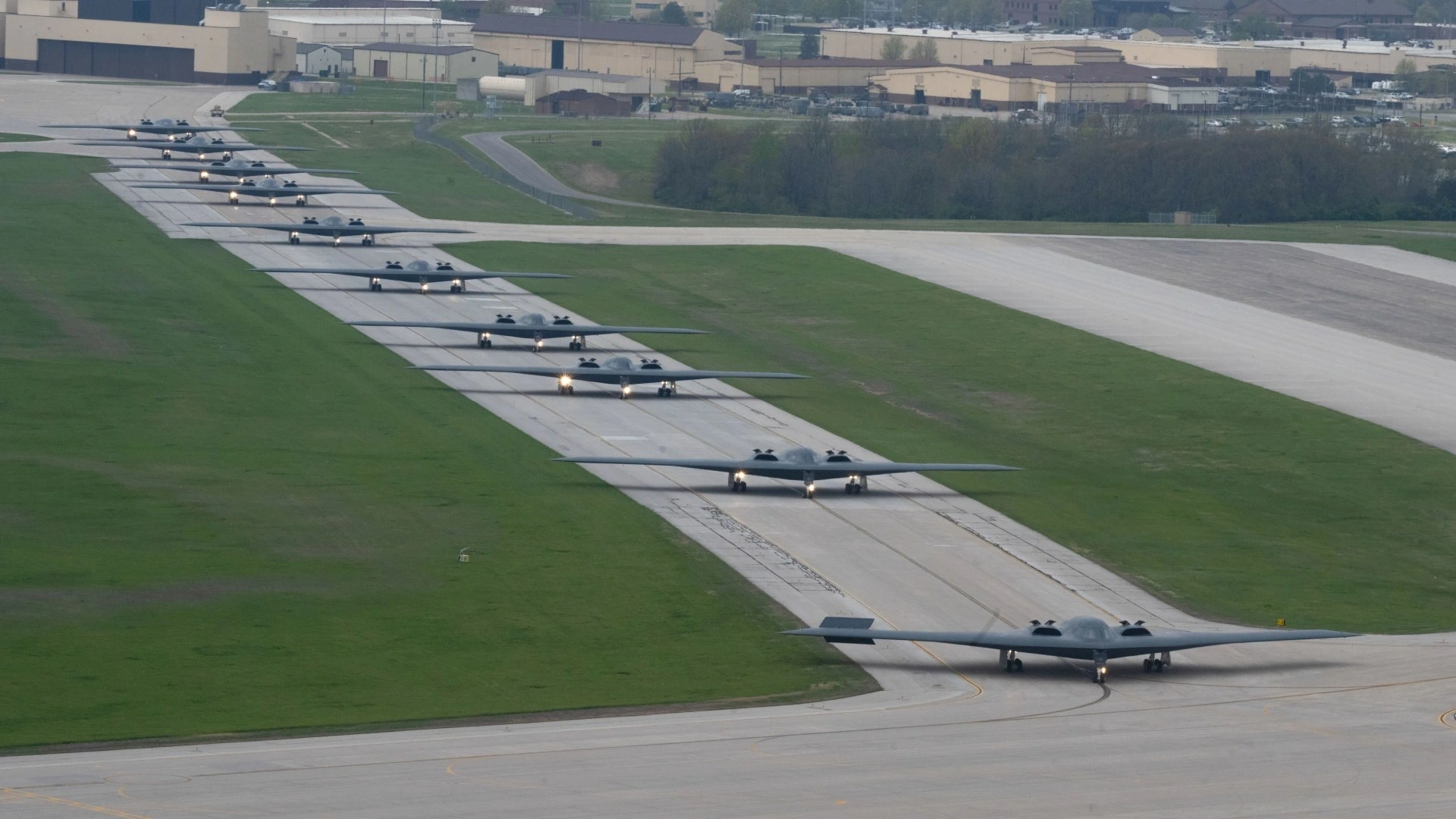
All B-2 Spirit aircraft are gathered at Whiteman Air Force Base, Missouri, USA (Photo: US Air Force).
To distract Iranian air defenses, some B-2 Spirits flew west over the Pacific Ocean as decoys, while others flew east over the Atlantic Ocean to target Iran. This was the main attack direction of Operation Night Hammer.
The B-2 Spirits had to fly for about 20 hours straight to their targets before returning to the US. Although the B-2 Spirits can fly continuously for 44 hours, carrying heavy weapons (GBU-57 smart bunker-buster bombs, weighing 13.6 tons each), the B-2 Spirits had to refuel in the air.
Bloomberg news agency quoted US defense officials as saying that the B-2 Spirit aircraft was refueled in the air with the support of tanker aircraft such as the KC-135 Stratotanker and KC-46 Pegasus from air bases in the UK and India.
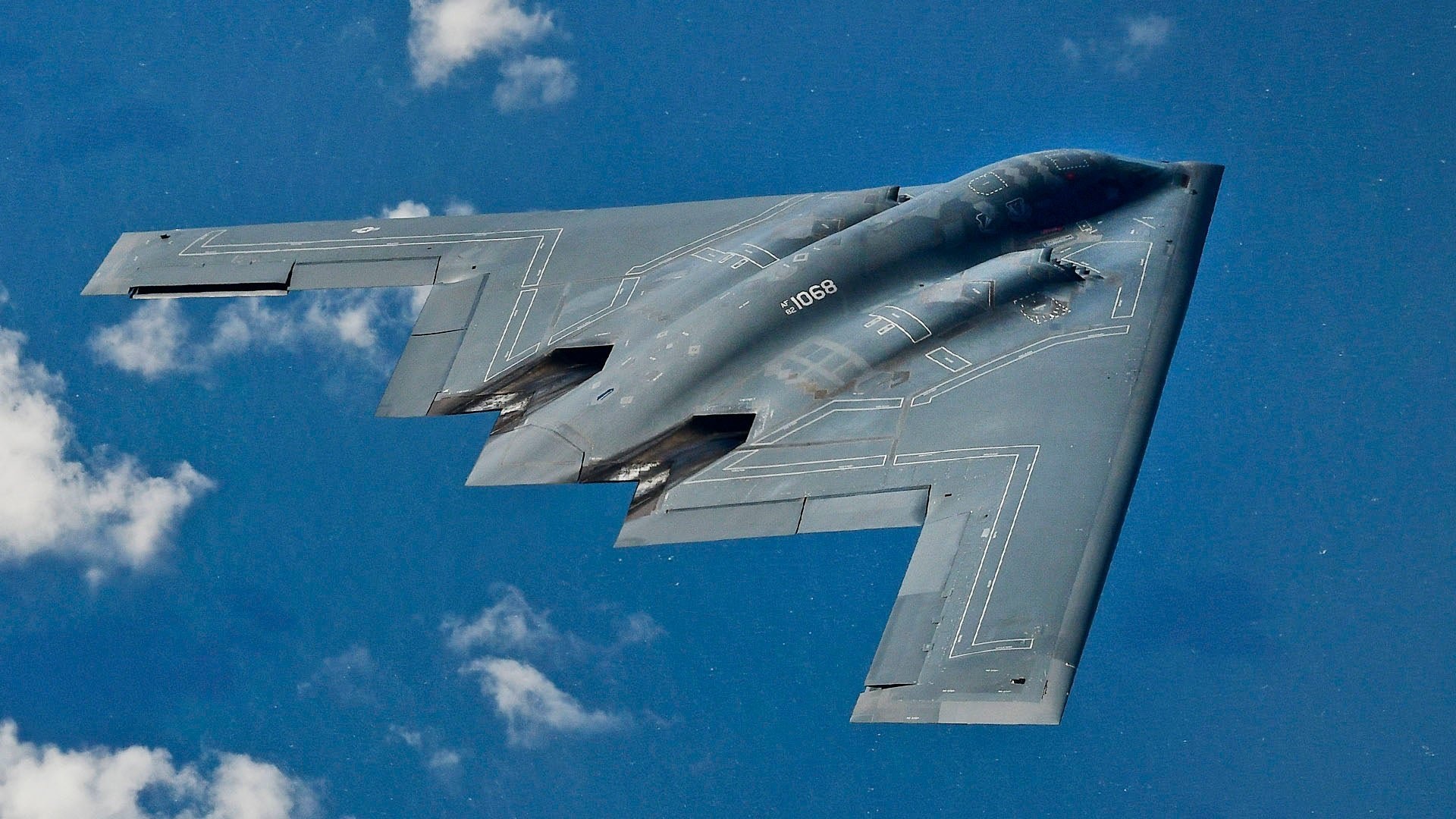
B-2 Spirit aircraft with a special design, resembling a flying saucer (Photo: Getty).
After completing the bombing mission against Iran's nuclear facilities, the B-2 Spirit aircraft immediately returned to Whiteman Air Force Base, instead of landing at US allied airports abroad.
B-2 Spirit - The US Air Force's longest-range bomber
The B-2 Spirit stealth bomber was developed by Northrop Grumman in 1981. The aircraft's first test flight took place on July 17, 1989, before being officially put into service in the US military from January 1, 1997.
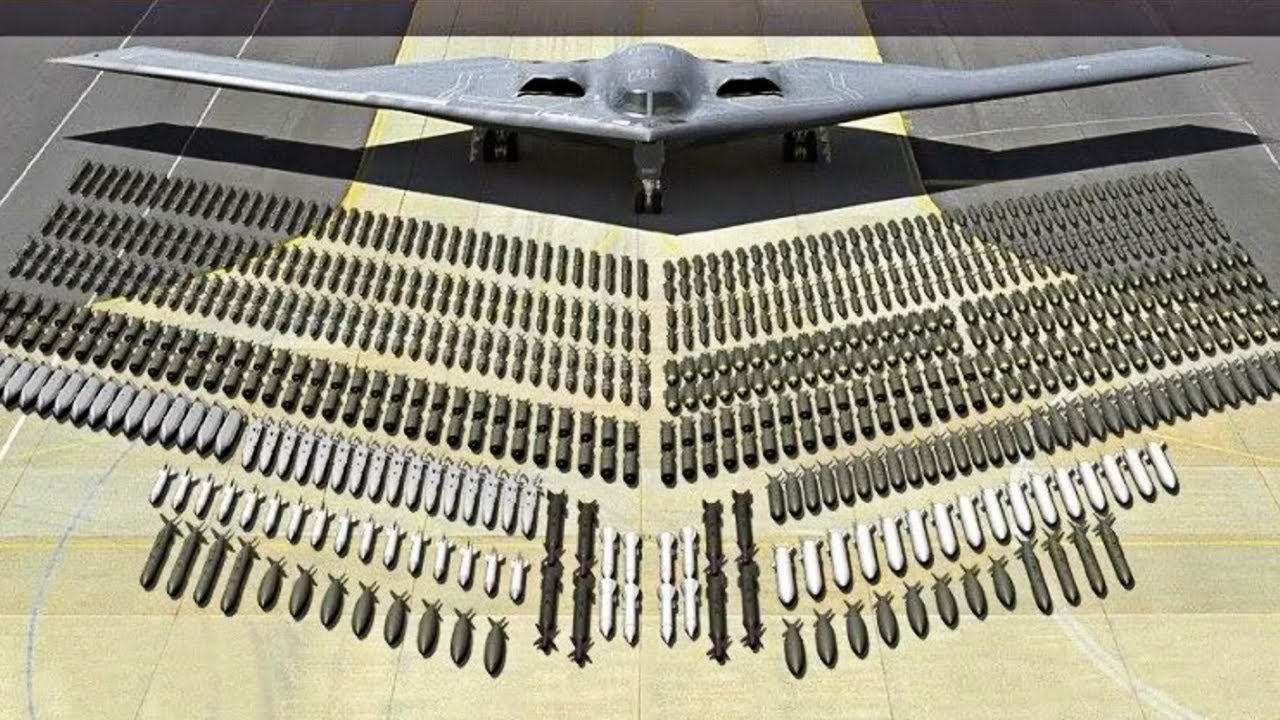
The B-2 Spirit aircraft can carry 18 tons of bombs, including conventional bombs, bunker-busting bombs and nuclear bombs (Photo: Tech Vision).
The cost of producing a B-2 Spirit was about $2.13 billion in 1997, equivalent to $3.5 billion in today's dollars.
The total cost for the research, development and production program of 21 B-2 Spirits is about 44.75 billion USD. Including operating, maintenance and repair costs, the US military has spent about 100 billion USD on this type of aircraft up to now.
The B-2 Spirit has a wingspan of 52.4 m, is 20.9 m long and weighs about 71.7 tonnes empty. The aircraft can reach a maximum speed of Mach 0.95 (about 1,150 km/h), but usually flies at lower speeds to save fuel.
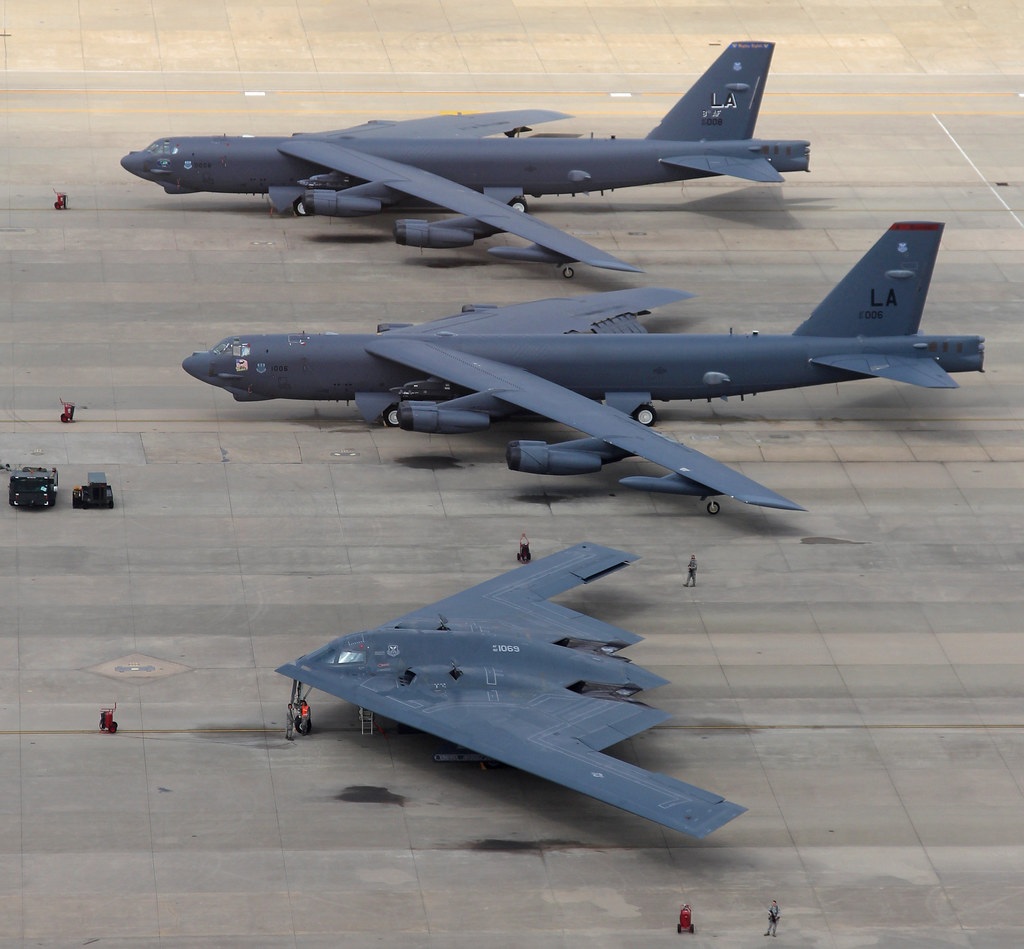
B-2 Spirit aircraft next to two B-52 bombers (Photo: Flickr).
The aircraft can reach a maximum altitude of 15,240m, allowing it to avoid radar detection, helping to optimize stealth efficiency, with the maximum range of the B-2 Spirit being able to reach 18,000 km without refueling or from 25,000 to 30,000 km when refueled in the air.
The B-2 Spirit's crew consists of two pilots. Inside the aircraft there is a small sleeping compartment for the pilots to take turns resting during long flights.
Why can the B-2 Spirit fly such long and long distances?
One of the main reasons the B-2 Spirit can fly long distances and high speeds is due to the special design of this aircraft.
Accordingly, the B-2 Spirit has a tailless design and a long wingspan, flat body, which will significantly reduce aerodynamic drag to help save fuel. In addition, the aircraft uses ultra-light composite materials to reduce weight and radar-absorbing coating also helps reduce friction with the air when flying.
Close-up of a B-2 Spirit taking off ( Video : USA Patriotism).
The fact that the aircraft can reach a maximum ceiling of 15,240m, where the air is thin, also helps reduce air resistance and consume less fuel.
The B-2 Spirit can carry up to 75 tons of fuel, increasing its range. It is one of the most fuel-capable fighter aircraft in the US Air Force.
To date, a total of 21 B-2 Spirit aircraft have been built, including one prototype and 20 in service. However, only 19 B-2 Spirits remain in service, as one crashed shortly after takeoff from Andersen Air Force Base on Guam on February 23, 2008.
The two crew members ejected in time. The plane was completely destroyed and beyond repair. The cause of the incident was determined to be a sensor error on the plane.
The crash revealed a weakness of the B-2 Spirit, which is that its electronic systems and sensors are too complex, sometimes leading to errors beyond the pilot's control.
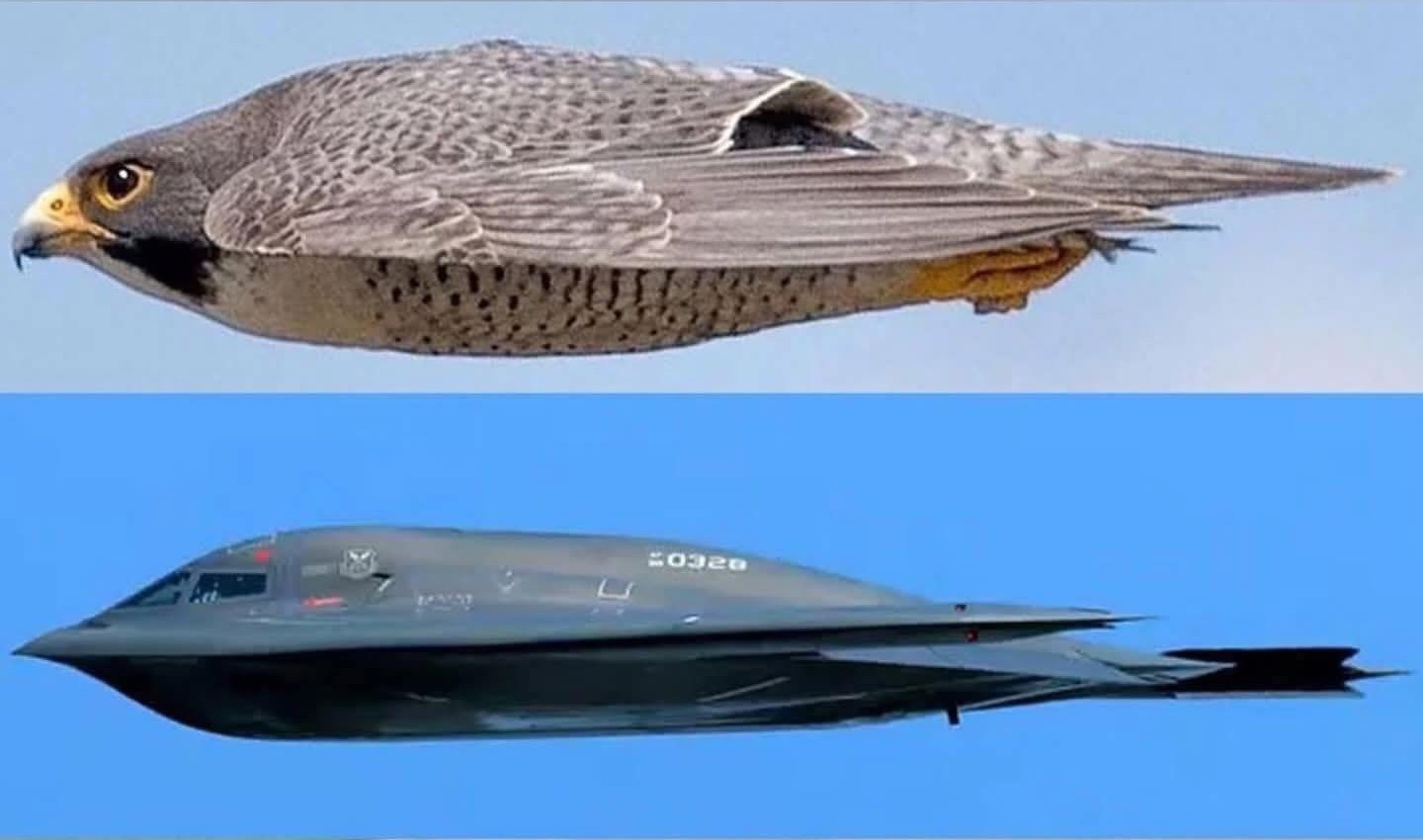
Many people believe that the design of the B-2 Spirit is based on the shape of an eagle, helping the plane achieve better speed. But in fact, Northrop Grumman has never admitted this (Photo: Instagram).
In February 2010, another B-2 Spirit suffered a serious fire at Andersen Air Force Base. The aircraft was severely damaged and required 18 months of repairs before it could return to service.
One special thing is that the B-2 Spirit aircraft is stationed at Whiteman Air Force Base, Missouri, and is rarely deployed at foreign airports.
This is because the maintenance and upkeep of the B-2 Spirit is difficult and requires appropriate equipment. The deployment of this expensive aircraft also requires strict protection to avoid the aircraft being attacked or being spied on by countries hostile to the US, to avoid technology leaks.
Of course, there have been many instances where B-2 Spirit aircraft have deployed to US air bases overseas to participate in military operations, but only for a short time before being returned to Whiteman Air Force Base.
Source: https://dantri.com.vn/khoa-hoc/may-bay-nem-bom-b-2-spirit-bay-thang-tu-my-den-iran-nhu-the-nao-20250623155431756.htm






![[Photo] Super harvest moon shines brightly on Mid-Autumn Festival night around the world](https://vphoto.vietnam.vn/thumb/1200x675/vietnam/resource/IMAGE/2025/10/07/1759816565798_1759814567021-jpg.webp)



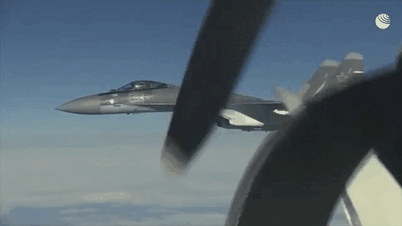

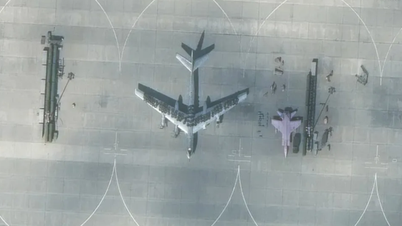

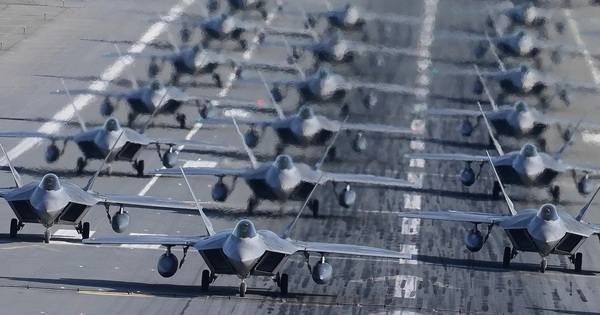

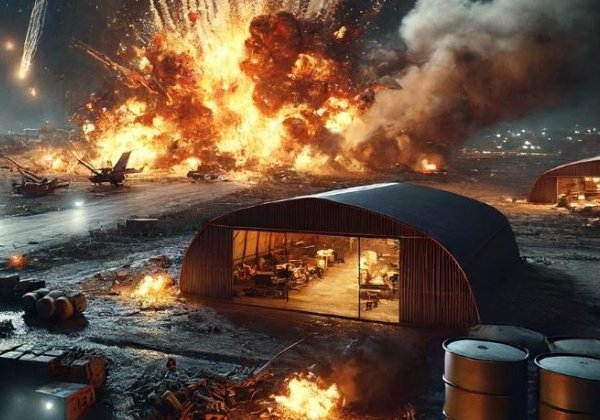
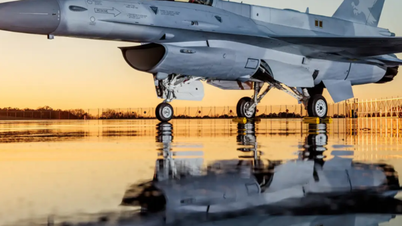




![[Video] Money appropriation, mental terrorism from fast loan advertisements on social networks](https://vphoto.vietnam.vn/thumb/402x226/vietnam/resource/IMAGE/2025/10/07/1759824972038_green-orange-illustration-modern-e-wallet-facebook-ad-png.webp)




























































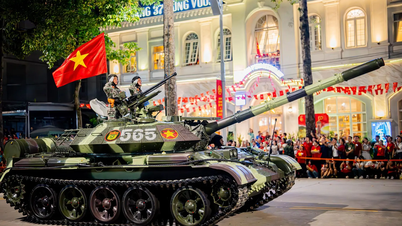
















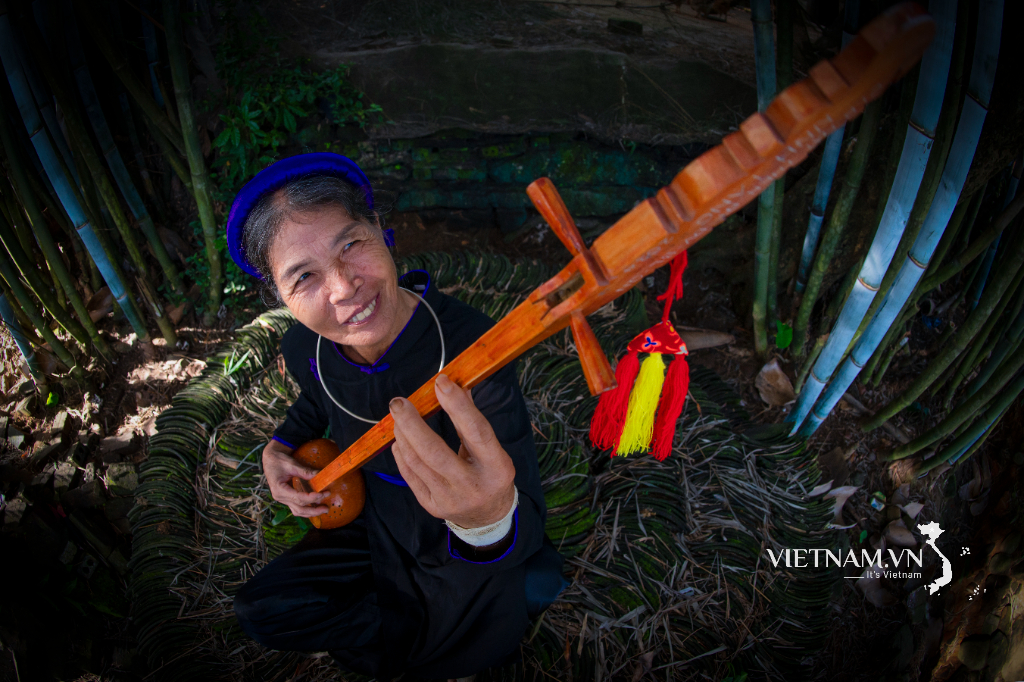


Comment (0)